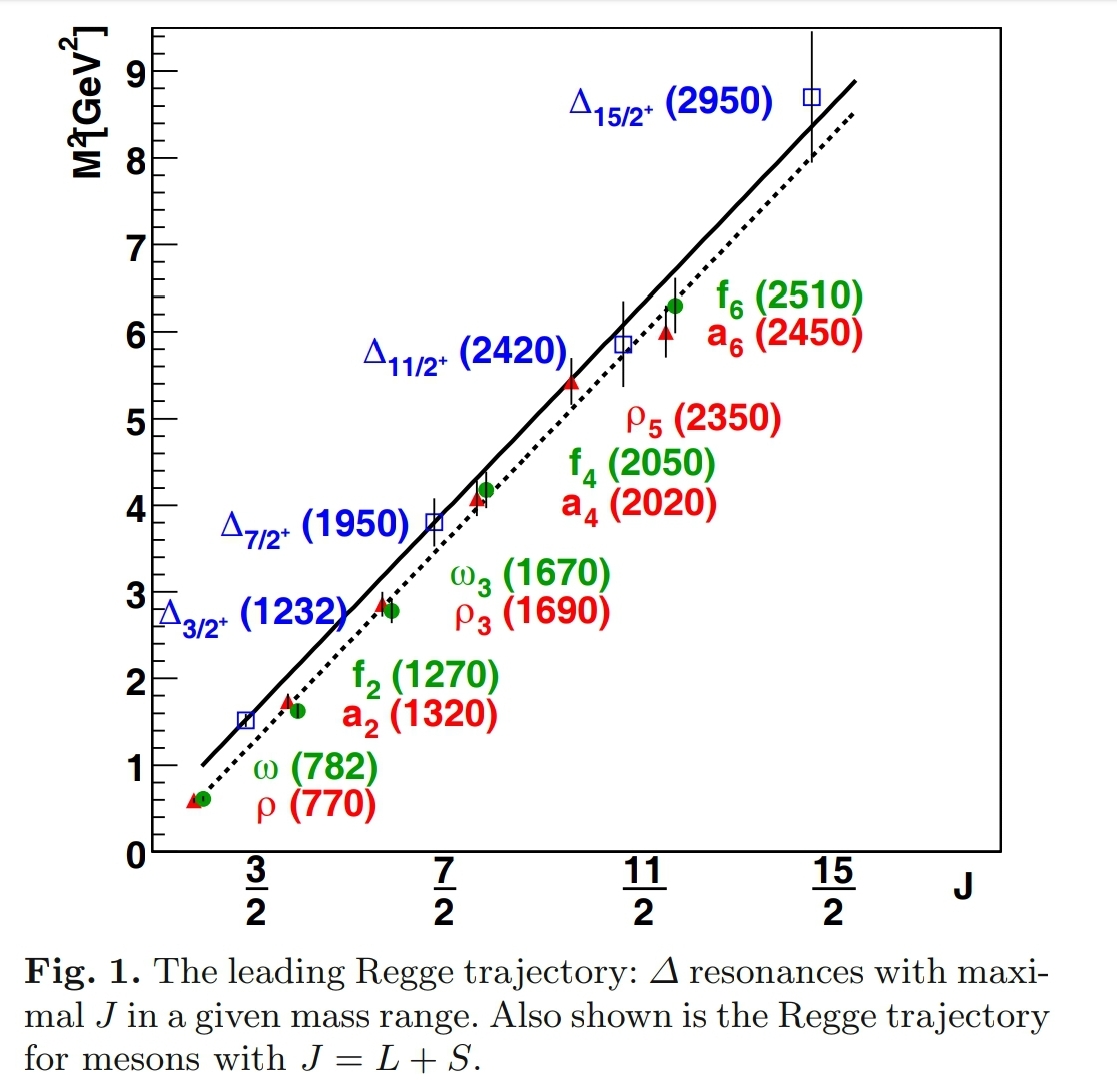nLab Regge trajectory
Note: string length scale and Regge trajectory both redirect for "Regge slope".
Context
Fields and quanta
fields and particles in particle physics
and in the standard model of particle physics:
matter field fermions (spinors, Dirac fields)
| flavors of fundamental fermions in the standard model of particle physics: | |||
|---|---|---|---|
| generation of fermions | 1st generation | 2nd generation | 3d generation |
| quarks () | |||
| up-type | up quark () | charm quark () | top quark () |
| down-type | down quark () | strange quark () | bottom quark () |
| leptons | |||
| charged | electron | muon | tauon |
| neutral | electron neutrino | muon neutrino | tau neutrino |
| bound states: | |||
| mesons | light mesons: pion () ρ-meson () ω-meson () f1-meson a1-meson | strange-mesons: ϕ-meson (), kaon, K*-meson (, ) eta-meson () charmed heavy mesons: D-meson (, , ) J/ψ-meson () | bottom heavy mesons: B-meson () ϒ-meson () |
| baryons | nucleons: proton neutron |
(also: antiparticles)
hadrons (bound states of the above quarks)
minimally extended supersymmetric standard model
bosinos:
dark matter candidates
Exotica
Contents
Idea
In physics, specifically in quantum hadrodynamics and in string theory, a Regge trajectory is, for any given type of physical system but specifically for hadrons and for strings, the graph of the mass-squared as a function of total angular momentum (with all other properties held fixed).
Properties
Hadron supersymmetry
The Regge trajectories of mesons and of hadrons are observed to have essentially the same slope.


This phenomenon is explained by hadron supersymmetry.
Related concepts
References
- E. Klempt, B. C. Metsch, Multiplet classification of light-quark baryons, Eur. Phys. J. A 48, 127 (2012) (doi:10.1140/epja/i2012-12127-1)
See also:
- Wikipedia, Regge theory
Last revised on June 13, 2023 at 10:27:08. See the history of this page for a list of all contributions to it.